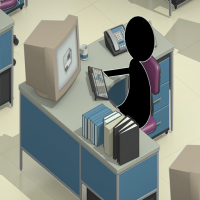Portal 2 Puzzle Maker/Editing Tips
Jump to navigation
Jump to search
- The editor does not allow for the creation of brushes smaller than 128x128. If you wish for something to be raised (for example, so a redirection cube can reach a laser, or so that a turret is vulnerable to a laser at 64 units high) you can place it on a lightbridge aimed at a black, non-portalable surface (so as not to interfere with gameplay).
Avoiding Traps
The editor is not able to detect situations where the player can get trapped or stranded, and it is not pleasant for players to have to hit "restart level." Do not assume that the player will always be able to portal out! Follow these guidelines to ensure that the player will never get trapped.
- Avoid creating pits that the player cannot portal out of; use deadly goo or a laser field instead. If you were planning on using such a pit for flinging, a portalable surface on the wall or ceiling above the entrance to the pit, or otherwise an escape shaft, will solve this.
- Be aware for situations where the player can get trapped behind a panel, and include an escape route.
- Be aware for situations where the player can get stranded on an island surrounded by deadly goo, and include a faith plate to return the player to a spot where they can finish the test.
- Any puzzle involving boxes and 90-degree panels acting as doors is easily prone to creating a trapping issue. Include an escape route and an easy way to respawn your box.
- Be aware of other cases where the player is prone to getting trapped. Often this is the result of abused and misused one-way paths.
Aesthetic Tips
While Hammer is best for detailing, many of us do not have the patience to learn such a program. Here's some tips on how to make the best of what you have been given.
- Place observation rooms high up on walls so that they spread light across the chamber smoothly.
- Place the big observation room near the start if you want the player to see it turning on.
- The big observation room casts shadows. Position it on a wall where it will give the most impact.
- While light strips can be placed almost anywhere, they are best placed in areas that give hints as to how to solve the puzzle, such as nearby portalable surfaces.
- Be careful not to add too many lights, as the brightness can become unpleasant.
- If nothing else, remember to add some light to your test chamber. Darkness is NOT a testing element, and will only frustrate players as they stumble around in the dark.
- Try to keep your designs as simple as possible, because too many testing elements (especially panels and stairs) will cause lag on lower-end systems. Sometimes, less is more.
- Simplify your design to include only the minimum testing elements necessary to complete your test.
- Only use Companion Cubes in tests where you will use only one cube for a complicated test. Remember Test Chamber 17 in the first Portal. Be sure that you can always recover your Companion Cube, with it being possible not to die. Hazards that cannot destroy or lose the companion cube are best.
- Don't make little glass rooms with turrets/frankencubes that are just for decoration - they make a lot of noise and distract players.
- If your test chamber has multiple goo pits, make sure they are all positioned at the same vertical height. Goo pits located at different heights will not render fancy reflections, due to an engine limitation.
Co-op
- Make sure the test cannot be solved by one partner alone, otherwise it's not really a co-op test.
- Make sure that if one partner gets trapped, the other can free them, or that the player can die and respawn.
- If you want the players to start in different rooms (like the Calibration Course), add a vertical light bridge pointing at the entrance to the test chamber. The robots will spawn on opposite sides of the bridge.
| ||||||||||||||||||||||||||||||
